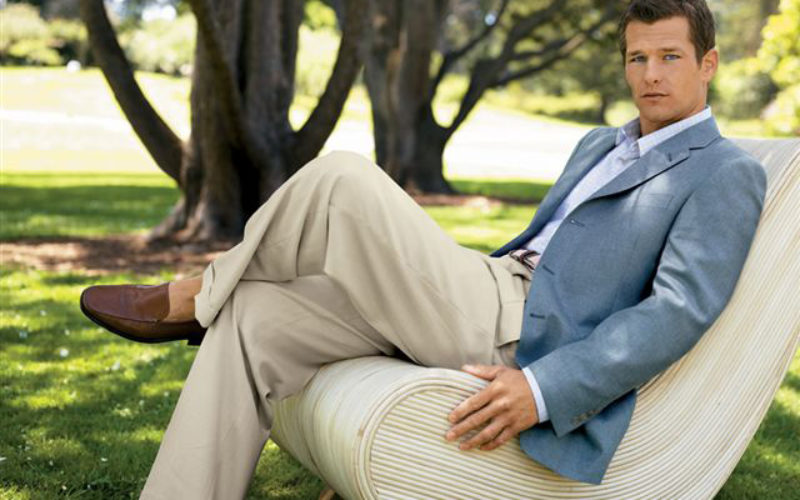Q. Fairly often I go to events and discover I am overdressed. I’d rather not risk being underdressed, so can you suggest solutions besides just staying in my suit, shirt, and tie and being the odd man out?
A. A man may enjoy “standing out” because he looks good and gets compliments on what he is wearing. But no one wants to stand out for being overdressed or underdressed.
The simplest ways to avoid being overdressed when wearing a suit are to pick less dressy suits: avoid such boardroom-correct suit as double-breasted dark pinstripes with peak lapels. Also avoid overly dressy accessories such as wingtip shoes, a white French-cuff shirt, and elegant cufflinks. Several years ago, that would have been about all I could offer you as helpful advice on this subject, but today you really do have some useful options.
Because going tieless has become so common these days (especially in social settings), the next step is simply to remove your necktie, tuck it into your jacket pocket, and open your top one or two shirt buttons. No longer a half-dressed look, this has become an acceptable, even somewhat cool, way to dress.
Still, if you are a regular reader of this column, you know that I am a big fan of neckties and regret this new trend away from wearing them. A good-looking tie adds an important note of color and interest to a man’s combination. So, I have another option for you. Before going to your event, and if you suspect that it might turn out to be less formal than a suit/shirt/and tie occasion, instead of a matched suit, wear a blazer or nice sport coat, well-cut dark dress trousers, a dress shirt, and a well-chosen necktie. You might wear a lightweight sweater or sweater vest layered under your jacket, so if you decide to remove the jacket, you still have a combination that is an “outfit.” Not only are these looks less formal than a suit, but now you have more items you can remove to make your combination even more casual:
- First, as mentioned earlier with a matched suit, you can take off the tie and unbutton your shirt. This is the usual remedy.
- Second, if a sport coat still seems a shade too dressy, you can remove it as well.
- Another option is to reverse these steps; leave the tie on and just remove your jacket. While this does not work well with a suit, it is a perfectly acceptable way to approach more casual dressing.
Any time there is a possibility you might end up removing your jacket at an event, it is even more important for everything else you are wearing to fit well, be pressed, and in pristine condition. Your shirt should not have an easy-care out-of-the-dryer look; it should be well ironed. I suggest a small, handsome shirt pattern in a flattering shade of blue. Your shoes and belt should be quality choices and in good condition. If you are a man who is comfortable carrying off the look, a colorful pair of braces (button-on suspenders) can add an unexpected bit of interest to what you are wearing.
Here’s another thought: You might ask the dress code. When you are invited, contact the hostess (not the host – he always says “casual”) about what the dress code is. This reminds me of a conversation I have written about before that I had a while back with the always well-dressed Michael Strahan. He told me: “When we are invited to an event, the other guys ask, ‘Where is it going to be?’ I ask, ‘What is the dress code?’ If the answer is ‘casual,’ I ask, ‘Nice casual? Dressy casual? Or blue jean casual?’” He followed up with, “I’m big on that. I want to know what people will be wearing, then I know I will be comfortable when I am there.”









